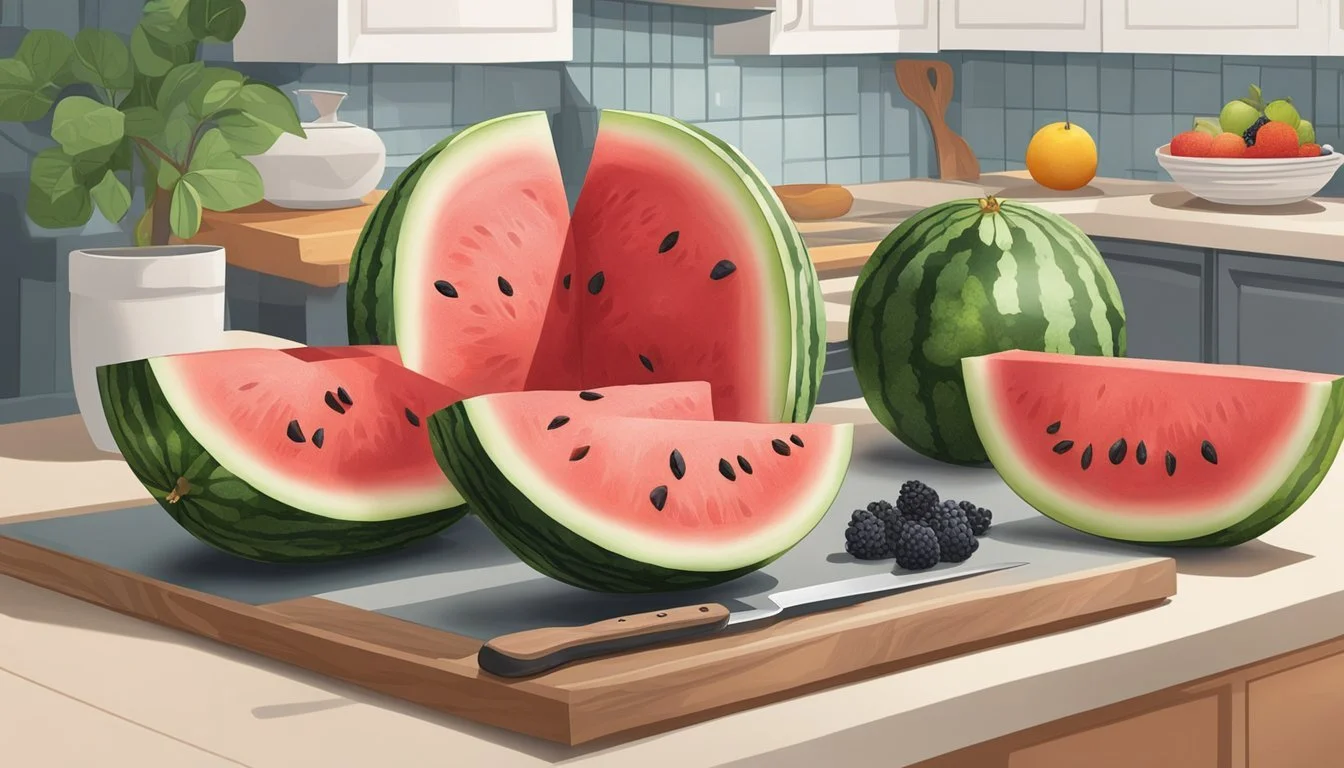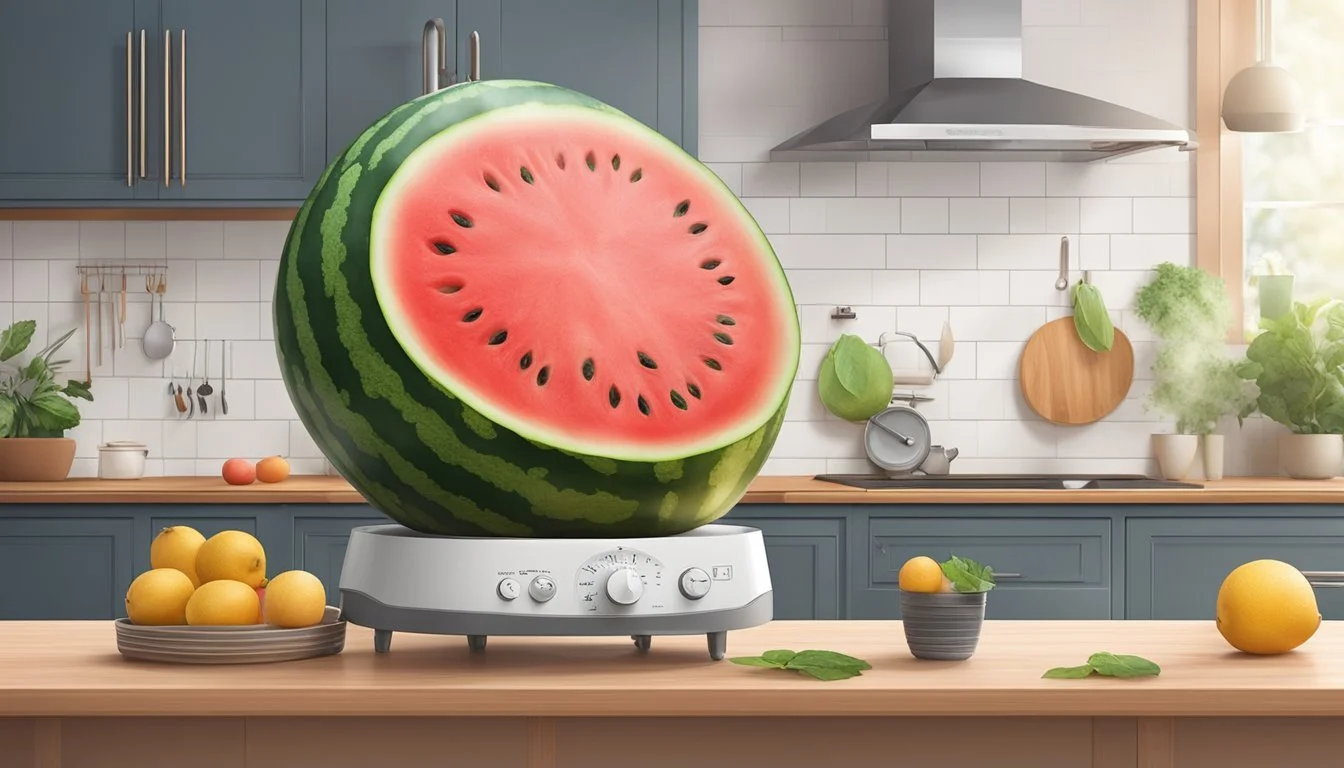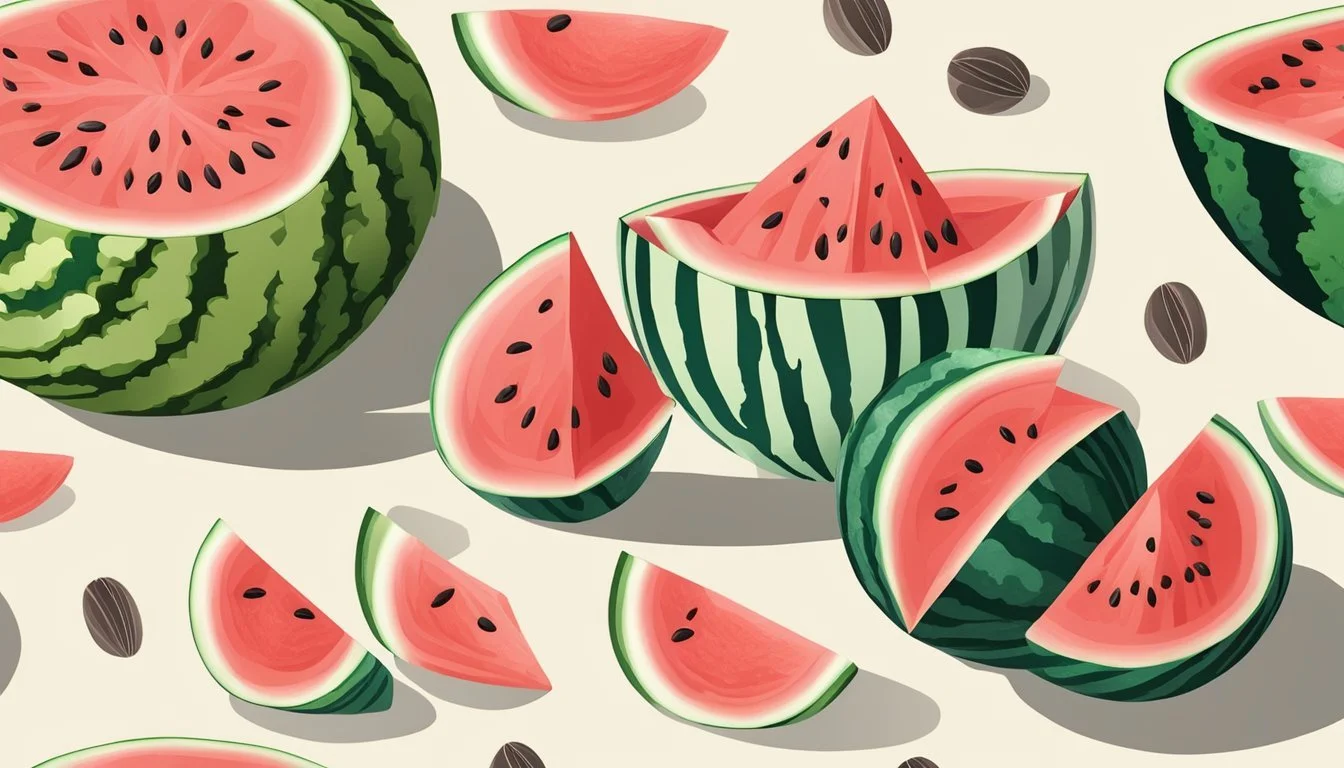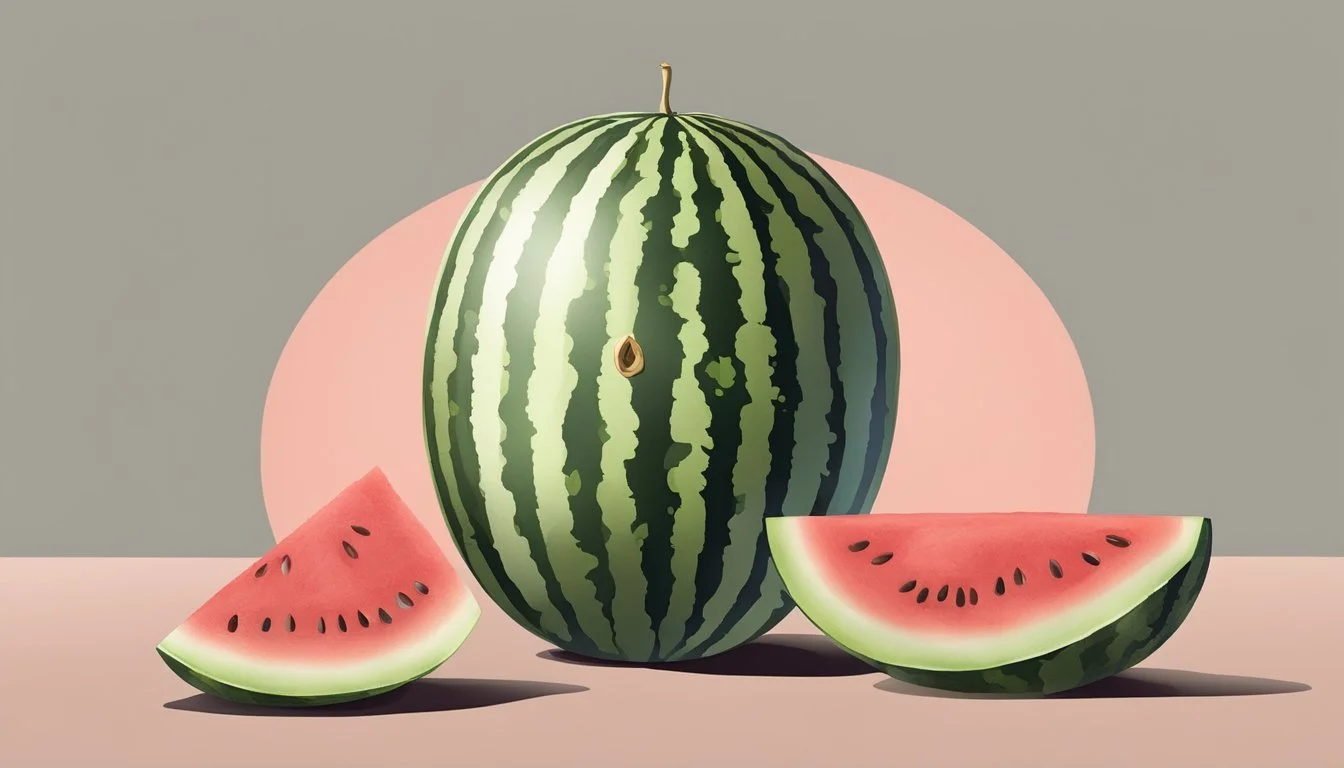How Long Does Watermelon Last?
Shelf Life and Storage Tips
Watermelon is a refreshing and popular fruit, especially during warm seasons, but its shelf life can vary depending on whether it's whole or cut and how it's stored. A whole watermelon can be kept at room temperature for about a week without significant loss of quality. If refrigeration is an option, its shelf life extends to two to three weeks, allowing ample time to enjoy its juicy flesh at a cooler temperature, which often enhances its flavor.
Once watermelon is cut, the degradation process accelerates due to exposure to air and moisture, which can lead to spoilage and decreased nutritional value. It's recommended for cut watermelon to be stored in the refrigerator in an airtight container and consumed within three to five days to ensure freshness and prevent the growth of microorganisms. Proper storage is critical for preserving the fruit's taste and health benefits.
Understanding the perishability of watermelon helps in planning when and how to consume it. While cut watermelon requires prompt refrigeration and consumption, a whole watermelon offers a longer window of time before it needs to be eaten or stored under cooler temperatures. Observing storage guidelines ensures the watermelon remains a safe, delicious, and hydrating snack.
Identifying Freshness and Ripeness
When selecting a watermelon, one should pay attention to visual cues and sensory indicators that reveal its ripeness and freshness. The perfect watermelon will showcase certain color characteristics, possess a particular texture, and emit a specific smell that indicates its readiness to be consumed.
Color and Texture Indicators
A ripe watermelon will show a symmetrical shape with a firm rind. The color is telling: look for a dull green skin rather than a shiny surface. On the underside, a yellow spot, known as the field spot, should be present, indicating where the watermelon rested on the ground and ripened in the sun.
In terms of texture, the rind should not cave in to slight pressure, and the skin should be devoid of bruises or blemishes. If the melon has stripes, one should expect a stark contrast between the stripes. Additionally, one should avoid melons with cuts or punctures which could lead to premature spoilage.
Smell and Firmness Assessments
A ripe watermelon often emits a faint, sweet aroma detectable at the blossom end. This end may have a slight give, but the overall structure must remain firm. When lifted, the watermelon should feel heavy for its size, indicating an abundance of water content, which is another sign of a ripe fruit.
Testing firmness involves pressing down gently on the rind; a ripe watermelon will resist this pressure and not exhibit dents or soft spots. One should be mindful that the presence of soft areas might signal over-ripeness or internal bruising.
Optimal Watermelon Storage
For maintaining the freshness of watermelon, the approach to storage differs significantly between whole and cut portions. Proper storage techniques are critical in extending the shelf life of this fruit while keeping it flavorful and fresh.
Whole Watermelon Storage
Storing a whole watermelon requires a cool, dry place away from direct sunlight. The room temperature should ideally be between 68°F and 72°F. On the countertop or in the pantry, a whole watermelon can last for 7-10 days. If refrigeration is preferred or if the ambient temperature is high, placing the whole fruit in the refrigerator can prolong its freshness for up to 2-3 weeks.
Cut Watermelon Storage
Once watermelon is cut, it should be kept in the refrigerator to prevent it from over-ripening and becoming unpalatable. Wrap the cut surfaces with plastic wrap or place the pieces in an airtight container to minimize exposure to air. This method ensures the cut watermelon stays fresh for 3-5 days. Regular checks for any signs of spoilage such as a sour smell or a slimy texture should guide if the fruit is still suitable for consumption.
Freezing Techniques
For even longer storage, watermelon pieces can be frozen. Here are the steps:
Cut the watermelon into small pieces, removing the seeds. Balls or cubes are recommended for ease of use later.
Spread the pieces on a baking sheet lined with parchment paper so they don't touch each other.
Flash-freeze the pieces by placing the tray in the freezer for a few hours until they are solidly frozen.
Transfer the frozen pieces into sealed containers or zip-lock freezer bags to prevent freezer burn.
Using these techniques, watermelon can retain its qualities for use in smoothies, desserts, and more for up to several months in the freezer.
Shelf Life Variations
The shelf life of watermelon varies significantly based on storage conditions, which can be optimized at room temperature, in the refrigerator, or by freezing.
At Room Temperature
Uncut watermelon typically lasts for 7 to 10 days when stored at room temperature, ideally between 68°F and 72°F. It should be placed on a countertop or in a pantry, away from direct sunlight to prevent over-ripening.
In The Refrigerator
Once cut, watermelon should be stored in the refrigerator. The shelf life extends to 3 to 5 days when refrigerated at a consistent temperature around 55°F. For best results, one should place the sliced or cubed melon in a sealed container or wrap it tightly with plastic wrap to prevent air exposure.
When Frozen
Freezing extends the watermelon's shelf life considerably. Watermelon chunks should be stored in airtight containers or sealed bags to last up to 10-12 months. Maintaining a stable freezing temperature is crucial for preserving the fruit's quality over time.
Factors Affecting Watermelon Longevity
The longevity of watermelon is influenced by several critical factors, including its size and shape, the conditions under which it is stored, and the ability to identify signs of spoilage. Assessing these criteria can help determine the optimal consumption time frame for this fruit.
Size and Shape Considerations
Watermelons that are heavy for their size and have a symmetrical shape tend to last longer due to even ripening and less stress on the fruit's skin. Smaller watermelons generally have a shorter shelf life compared to larger ones, as the ratio of skin to flesh affects how quickly they dehydrate or become overripe.
Impact of Storage Conditions
Temperature: A whole, uncut watermelon can be kept at room temperature until ripe. Once ripe, it should be refrigerated to extend its lifespan, lasting up to two weeks.
Moisture: Watermelons should be stored in a dry place to prevent mold growth.
Air Exposure: Once cut, watermelon should be stored in an airtight container to prevent it from absorbing odors and to maintain freshness for 3 to 5 days in the refrigerator.
Signs of Overripe or Spoiled Watermelon
Mold: The presence of mold or a moldy smell is an indicator that the watermelon has spoiled.
Texture: A mushy texture or the appearance of dents and bruises suggests that the watermelon is past its prime and should not be consumed.
Change in Color: Any discoloration on the rind or the flesh can also be a sign of overripeness or spoilage.
Using Watermelon Before It Spoils
As the shelf life of a cut watermelon is typically 3-5 days, it is crucial for one to make quick and smart choices to fully utilize the fruit before it spoils. These strategies include preparing a variety of refreshing watermelon-based dishes and employing preservation techniques to extend the fruit's usability.
Refreshing Watermelon Recipes
Watermelon can be transformed into a plethora of hydrating recipes. One can prepare a Watermelon Juice by blending watermelon chunks and straining the mixture to achieve a clear juice, enhancing hydration especially during warm days. In addition, crafting Watermelon Smoothies by combining watermelon with other fruits like cucumber or sparkling water creates a refreshing beverage.
For a savory twist, one could slice watermelon into cubes or balls and add it to Fruit Salads or mix it with feta and mint for a delightful combination. Roast Watermelon is a more unconventional approach where chunks can be grilled until caramelized, creating a unique savory dish.
Preservative Techniques
To preserve watermelon beyond the immediate consumption period, a few techniques are noteworthy. One can Pickled Watermelon Rind; this involves using the rind, which is often discarded, and immersing it in a pickling solution for a tangy treat that can last several weeks.
Alternatively, one can store cut watermelon in airtight containers to slow down the spoilage process. For extended preservation, freezing watermelon is an excellent method. Freezing watermelon pieces on a tray lined with parchment paper before transferring them to a sealed bag helps maintain their shape and quality for use in recipes like smoothies later on.
Purchasing and Pre-Storage
The key to enjoying a fresh, juicy watermelon starts with selecting the best fruit and managing it correctly before it goes into storage.
Selecting The Best Watermelon
When buying a whole watermelon, consumers should look for a firm, symmetrical watermelon that is free from bruises, cuts, or dents. The National Watermelon Promotion Board suggests finding the 'field spot,' a creamy yellow spot where the watermelon rested on the ground and ripened in the sun. A strong field spot can indicate good taste and flavor. The watermelon should feel heavy for its size, which suggests plenty of water and a juicy texture. A dull rind rather than a shiny one is often a sign that the watermelon is ripe.
One can check for ripeness by giving the watermelon a tap; a ripe one will have a deep, hollow sound. The watermelon vine's condition isn't directly observable at a supermarket, but a dried stem usually means the watermelon has ripened.
Proper Pre-Storage Handling
Upon bringing a whole watermelon home, it's important to store it correctly to maintain its flavor and extend its shelf life. If the watermelon was refrigerated at the point of purchase, it should be kept cold. However, if it was at room temperature, it can remain in the kitchen for a short period. Whole watermelons can be stored on the countertop away from direct sunlight. Ideally, they should be consumed within a week from the purchase date, as they do not come with an expiration date -- use the date of purchase as a guide.
For cut watermelon, it is advisable to consume or store it promptly since cut pieces are more perishable. Before slicing, one should wash the watermelon under running water to remove any potential contaminants. Cut watermelon should be kept refrigerated in a lidded container to retain its freshness and should be eaten within three to five days for optimal flavor and safety.
Innovative Use of Watermelon Parts
When it comes to the versatile watermelon, nearly every part of the fruit — from the juicy flesh to the seeds and rind — can be used in a variety of innovative ways.
Creative Culinary Ideas
Watermelon Rind: Often discarded, the watermelon rind is both edible and nutritious. Cooks can transform it into pickles or a candied treat. The rind, when minced, also makes a hearty addition to vegetable stir-fry or chutneys.
Watermelon Cubes and Small Pieces: Watermelon cubes or small pieces are perfect for a refreshing twist in salads, or to make a summer-inspired watermelon salsa. They can also be skewered for a healthy snack.
Seeds: Watermelon seeds should not be overlooked. Cleaned and dried seeds can be roasted with salt for a crunchy snack. They are also ground into flour for baking or to make watermelon seed butter.
Lemonade: Incorporate watermelon into beverages by blending it into watermelon lemonade, adding a sweet and refreshing note to this classic drink.
Nutritional Benefits of Watermelon Consumption
Watermelon is renowned for its hydrating properties, with a high water content that benefits skin hydration and overall health. The flesh of the fruit is packed with nutrients like vitamin C, vitamin A, and magnesium.
Seeds: Watermelon seeds are a good source of protein, magnesium, zinc, and healthy fats which makes them beneficial for heart health and blood sugar regulation.
Consuming parts of the watermelon that are often overlooked, not only reduces food waste but also provides a variety of nutrients to one's diet.
Food Safety and Watermelon
Handling watermelon properly is crucial to maintain its freshness and ensure it is safe to consume. Following guidelines for the storage and identification of spoilage can help prevent foodborne illnesses.
Managing Cut Watermelon
Once watermelon has been cut, it should be stored in the refrigerator to slow down the growth of bacteria. Below are steps for safely storing cut watermelon:
Refrigeration: Place the sliced watermelon in a tightly sealed food storage container or wrap it securely with plastic wrap.
Temperature: Keep the refrigerator temperature below 40°F (4°C).
Duration: Consume the cut pieces within 3-5 days to ensure freshness.
Detecting Spoilage and Preventing Foodborne Illness
Watermelons can become a breeding ground for bacteria if not stored properly or if they are kept beyond their shelf life. Here are signs of spoilage and tips to prevent foodborne illness:
Color and Texture: Inspect for any discolorations or slimy texture on the fruit's flesh.
Odor: An off or sour smell is an indication that the watermelon is no longer safe to eat.
Liquid: The presence of excess liquid around the watermelon pieces can signal over-ripening or spoilage.
Storage Tip: Uncut watermelons should be kept at room temperature, away from direct sunlight, and possibly in a cooler location if available.
Frozen Option: For longer-term storage, watermelon can be cut into pieces, flash-frozen on a baking sheet, and then transferred to a sealed bag, where it can last for up to 8-12 months in the freezer.
Mindful handling and storage of watermelon can prevent foodborne illness and ensure the fruit stays safe and enjoyable to eat.








